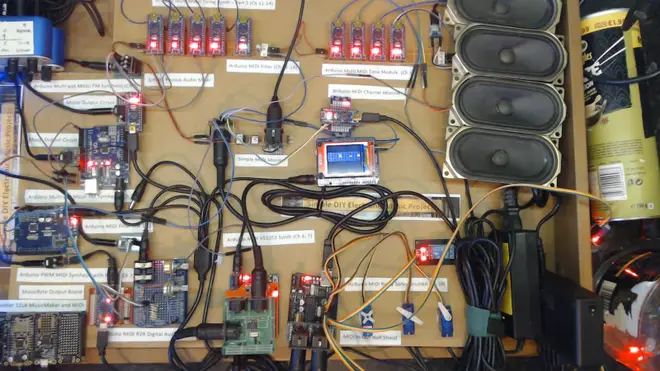Hacker builds electronic orchestra that plays Holst’s The Planets with supreme accuracy
5 October 2021, 16:55 | Updated: 11 October 2021, 09:55

Gustav Holst’s suite is performed as you’ve never heard before....
Written between 1914 and 1917, The Planets is a seven-movement orchestral suite composed by Gustav Holst.
When Holst wrote the work, it was scored for a large orchestra of woodwinds, brass, strings, percussion, as well as a celesta and organ.
What the 19th century-born composer probably didn’t expect, was for this entire suite (which calls for more than 100 orchestral musicians) to be performed by just one person.
Introducing, Kevin and the Lo-Fi Orchestra’s performance of The Planets (watch below).
Read more: Mendelssohn’s Wedding March but it’s played on 100% homemade instruments

Amazing performance of Mars from Holst's Planets Suite seen from Lo-Fi Orchestra DIY project
Kevin runs the DIY Electronic website, which has been home to the Lo-Fi Orchestra project for the past year.
Introduced on the site and social media in September 2020, the ‘orchestra’, made up of Arduino synthesisers, now boasts over 100 projects, with pieces ranging from performances of Janáček’s Sinfonietta to the Theme from the Hitchhikers Guide to the Galaxy.
The Lo-Fi orchestra project started as a way for Kevin to bring his “‘Simple DIY Electronic Music Projects’ together to perform a single piece”.
After deciding to work on the full orchestral score of The Planets, Kevin began by recreating the first movement, ‘Mars’, note by note on his growing Arduino orchestra (watch above).
Over the next nine months, Kevin finished all seven movements of the orchestral suite, programming everything from scratch from the original orchestral score and Holst’s own arrangement for two pianos.
“I could have built up ‘better’ versions for the Lo-Fi Orchestra, but one of my design goals was to attempt to keep the ‘home made’ possibility for each individual component,” says Kevin.
“You will hear additional clicks and pops due to poor grounding, 8-bit clipping, MIDI overloading, unshielded mixing of digital MIDI signals and audio output, and so on in many of these performances.
“But if you want a hi-fi studio version you should play a MIDI file through a modern synthesiser or better yet go and hear a real orchestra perform,” he adds, “there is really nothing quite like it.”












